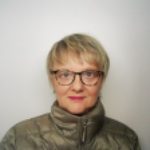Link to Pubmed [PMID] – 26945028
G3 (Bethesda) 2016 05;6(5):1201-15
Gene amplification has been observed in different organisms in response to environmental constraints, such as limited nutrients or exposure to a variety of toxic compounds, conferring them with specific phenotypic adaptations via increased expression levels. However, the presence of multiple gene copies in natural genomes has generally not been found in the absence of specific functional selection. Here, we show that the massive amplification of a chromosomal locus (up to 880 copies per cell) occurs in the absence of any direct selection, and is associated with low-order amplifications of flanking segments in complex chromosomal alterations. These results were obtained from mutants with restored phenotypes that spontaneously appeared from genetically engineered strains of the yeast Saccharomyces cerevisiae suffering from severe fitness reduction. Grossly extended chromosomes (macrotene) were formed, with complex structural alterations but sufficient stability to propagate unchanged over successive generations. Their detailed molecular analysis, including complete genome sequencing, identification of sequence breakpoints, and comparisons between mutants, revealed novel mechanisms causing their formation, whose combined action underlies the astonishing dynamics of eukaryotic chromosomes and their consequences.



